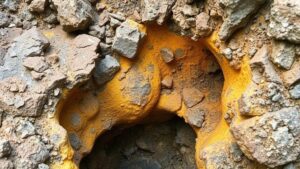Agricola’s Methods for Preventing Ore Contamination During Processing
Agricolas Methods for Preventing Ore Contamination During Processing
In the rapidly evolving field of mineral processing, the significance of controlling ore contamination cannot be overstated. Georgius Agricola, a 16th-century mining engineer and scholar, laid foundational principles regarding mining and metallurgy that remain relevant today. His methodologies encompass a variety of techniques aimed at maintaining ore purity throughout processing. This article explores Agricolas insights and how they can be applied in contemporary mining operations.
The Importance of Ore Purity
Ore contamination during processing can lead to suboptimal recovery rates and lower overall profitability. Pure ore ensures efficient extraction of valuable minerals while minimizing the introduction of undesirable materials. For example, if iron ore is contaminated with silica, it not only reduces the quality of the final product but also increases the costs associated with further separation processes.
Agricola’s Observations on Ore Handling
Agricola emphasized several methods for reducing contamination risk during various stages of the mining process. Among these were:
- Careful Selection of Ore: Agricola recommended choosing high-grade ore and avoiding mixed deposits that might introduce impurities.
- Appropriate Crushing Techniques: By utilizing tools that minimize dust generation and maintain ore integrity, Agricola addressed how crushing can lead to contamination through the mixing of processing media.
- Maintaining Clean Processing Equipment: Regular cleaning of processing tools helped to avoid cross-contamination from residual materials.
Separation Methods Used
Agricola championed the use of varied separation techniques to enhance ore purity. Some key methods include:
- Gravity Separation: Utilizing the natural differences in density, Agricola encouraged the use of shaking tables and jigs to separate heavier valuable minerals from lighter impurities.
- Froth Flotation: Although not developed until much later, Agricola’s principles laid the groundwork for the understanding of surface chemistry and the importance of flotative properties in separating ores.
Water Management in Ore Processing
Water plays a critical role in ore processing, and Agricola outlined several methods to manage it effectively:
- Use of Clean Water: Ensuring that the water sourced for processing is devoid of impurities is essential to maintaining ore purity.
- Settling Ponds: Agricola noted the importance of settling ponds to allow contaminants to settle out of the water before it was reused in processing.
Case Studies: Agricultural Application of Agricola’s Methods
Modern mining operations have seen the successful integration of Agricolas methods. For example, BHPs iron ore division has implemented strict protocols for ore selection and processing cleanliness. report a 15% increase in recovery rates after adopting rigorous cleaning processes influenced by Agricola’s methodologies.
Similarly, the introduction of advanced water management systems, inspired by Agricolas observations, has led to a 20% reduction in contaminant levels in the processed ore for Rio Tintos gold operations.
Actionable Takeaways
Agricola’s techniques for preventing ore contamination during processing provide several actionable insights for modern mining professionals:
- Prioritize the selection of high-grade ore to minimize contamination risk.
- Use regular cleaning protocols for equipment to reduce cross-contamination.
- Adopt effective water management practices to ensure the quality of processing inputs.
By adhering to these principles, mining operations can not only enhance ore quality but also increase their economic viability, reflecting the timeless relevance of Georgius Agricolas work.


